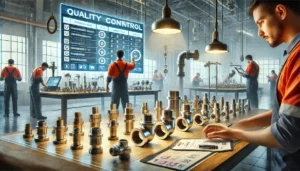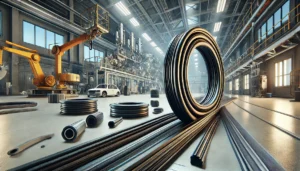In 2025, the industrial hose market is set to undergo remarkable growth as a result of innovation, globalization, and increased industry requirements. A major sector advancement has been noted, as the durability, flexibility, and overall performance of hoses are being improved for use in different industries.
Market Trends and Growth
The industrial hose market is projected to reach $15.3 billion by 2024 and continue to expand at a CAGR of 6.2% through 2032, reaching an estimated $24.8 billion. These growth factors can be attributed to globalization, increasing urbanization, and a growing need for liquid transfer technology in oil and gas, chemical, and pharmaceutical plants. The emerging economies, especially in the Asia-Pacific region, will continue to drive this expansion as infrastructure and industry develop. The growth of construction, refineries, and power plants is further increasing the need for industrial hoses.
Technological Innovations
The major players in the industrial hose industry are embracing modern technology to improve the performance of products and the experience of users. The emergence of cloud-based hose manufacturing systems has aided in increasing productivity, expediting assembly, and enabling proper fitting thread identification. Such users have access to a lot of information on hoses and fittings, which makes their choice easier and reduces the time spent unproductively.
The market is being transformed by the proliferation of smart hoses equipped with IoT sensors that track working parameters in real time, including pressure, temperature, and flow rate. Such developments help delimit system failures by issuing early maintenance alerts, minimizing non-productive time, and protecting vital operations. Furthermore, the capacity to embed these smart systems into broader industrial automation makes these processes even easier and more efficient.
Material Advancements
There have been notable increases in the science of materials over the years even within the industrial hose fabrication sector. Despite the popularity of flexible rubber hoses, the incorporation of sophisticated polymers, such as ultra-high molecular weight polyethylene (UHMWPE), Thermoplastic elastomers, polymeric materials, has resulted in hose performance improvement. These materials are better for high-pressure and high-temperature applications as they add flexibility while reducing weight and increasing chemical resistance. Also gaining popularity are the hybrid hoses, which consist of layers of polymer and metal reinforcements, for their unparalleled strength and durability.
Hose manufacturers are now exploring the use of nanotechnology for coatings that enhance the will for fetching abrasion, thermal stability, and great resistance against corrosive chemicals. These innovations are bound to propel the chemical processing and marine industries where working under extreme conditions is a necessity.
Environmental Considerations
The focus of hose design is now on hoses that can be reused. There are efforts to create hoses from materials that can be recycled at the end of their life to avoid pollution or the wasting of valuable resources. The green polymers and friendly coatings are created to decrease the harmful effects industrial hoses have on the environment. And also very appealing to such industries is the shift towards lightweight hoses that cut down the energy needed to move and handle them.
Enhanced Applications
Innovative industrial hoses are gaining popularity in new sectors like renewable energy, advanced manufacturing, and green construction. For example, durable hoses are used in the cooling systems and hydraulic operations in solar and wind power plants. The food and beverage sector is also using hoses fabricated from FDA-compliant materials for safe and hygienic fluid handling. In the pharmaceutical sector, high-purity hoses engineered for sterile environments are crucial for the transfer of delicate materials free of contamination.
Future Outlook
In the future, the industrial hose market is expected to expand at a faster rate due to increased industrialization and urbanization. The advancement of new materials and manufacturing processes is likely to accelerate the adoption of flexible pipelines, which is a positive trend. It is projected that smart IoT enabled hoses will lead the market as they allow industries to monitor and optimize their operational performance. The use of AI in predictive maintenance is also projected to increase with smart hoses monitoring wear and tear and sending real-time data to the AI system to determine the best maintenance schedule.
Since there is an increased demand for highly performant and sustainable hoses, manufacturers are finding it necessary to innovate continuously, invest in research and development, and apply more advanced technologies into their systems to fulfill the changing expectations of global industries. Developing economies, eco-friendliness, and the increased focus on automation are the factors that will spearhead new industrial hose technologies.
Conclusion
To conclude, there is a huge paradigm shift coming in the industrial hose sector in 2025, mainly due to shifts in sensor technologies, material science, mechanical engineering IoT, and best practices in business. More cost-effective, durable, and multifunctional solutions to fluid transfer challenges like pumping will be rendered. These changes not only address the multifaceted demands of up to date industries, but, more importantly, establish foundations for the future of sustainable, inter-connected, and advanced worlds.










